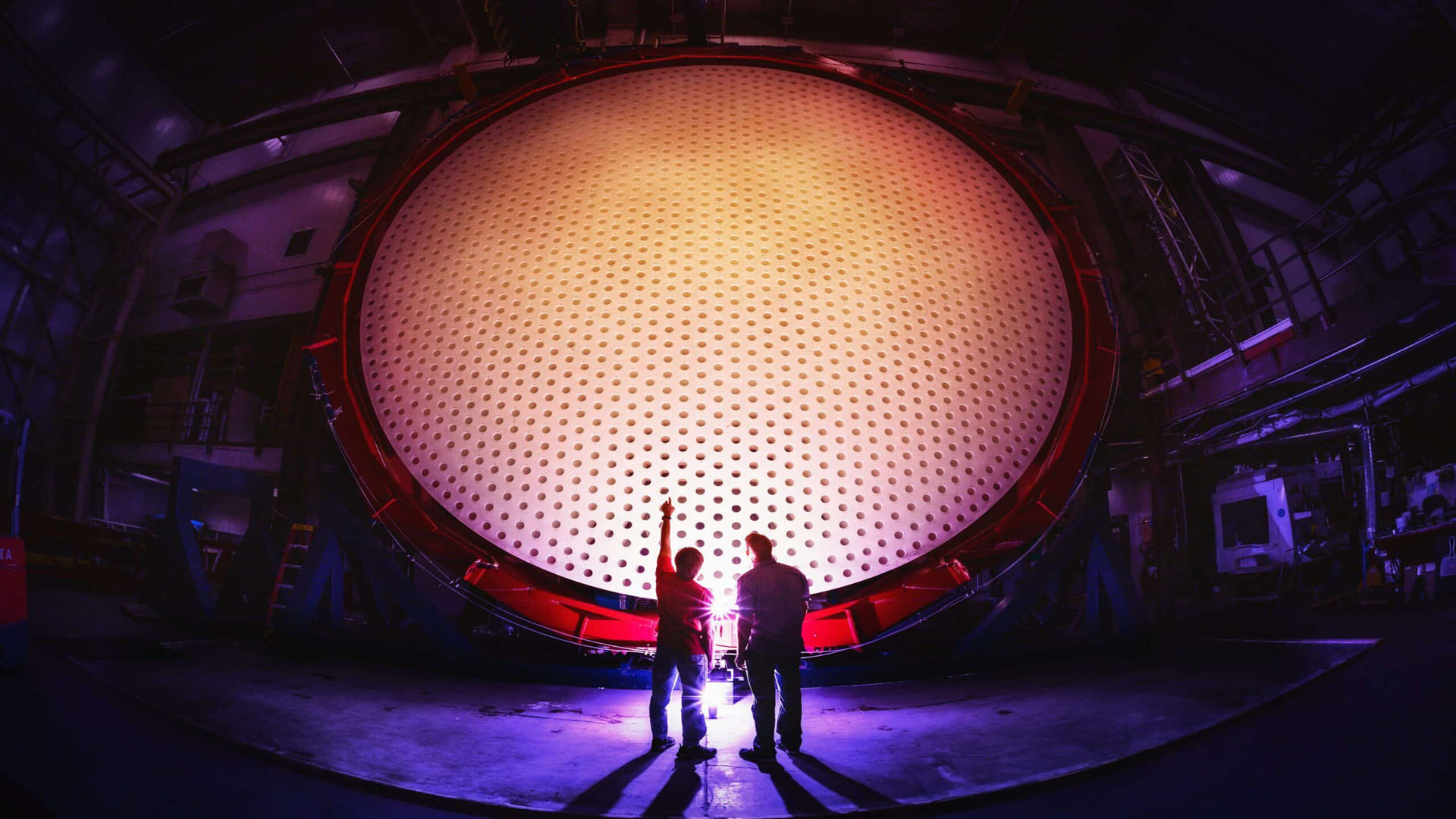 University of Arizona Richard F. Caris Mirror Lab staff members Damon Jackson (left) and Conrad Vogel (right) in the foreground looking up at the back of primary mirror segment five, April 2019.
University of Arizona Richard F. Caris Mirror Lab staff members Damon Jackson (left) and Conrad Vogel (right) in the foreground looking up at the back of primary mirror segment five, April 2019.
The Giant Magellan Telescope will be the biggest telescope in the world. But first, its seven giant mirrors must be melted, cooled, shaped, and polished... a process that demands perfection and years of effort.
Construction will begin this week at the University of Arizona’s Richard F. Caris Mirror Laboratory on the seventh and final mirror for the telescope tasked with advancing astronomer’s search for other life in the universe.
The mirrors are each three stories tall, and the resulting telescope will be so powerful that someone on Earth could read a newspaper on the moon.
“You can do all the things you do in astronomy, only better. It sees finer detail than any other telescope,” University of Arizona Professor of Astronomy Chris Impey said.
Impey says the completion of the Giant Magellan Telescope will mean a new phase of looking for life beyond Earth.
One of the telescopes’ first endeavors will be to look for signs of life on some of the hundreds of exoplanets NASA has identified as Earth-like.
Impey says there is strong agreement among astronomers that the exoplanet Proxima Centauri B should be priority number one.
“If you ask all the people who are going to use that GMT what they're going to observe on their first night, they all say the same thing. They say Proxima Centauri B, and that's because Proxima Centauri is the nearest star to us, and it's very likely to have an Earth-like planet orbiting it,” he said.
The unprecedented quality of the telescope means that astronomers don’t know exactly what the images will look like. But Professor Impey says that’s exactly what makes astronomy the science of discovery.
“Every time you have a new capability, you get surprised. And so that's part of the fun, that you can't predict exactly what GMT is going to find or see,” he said.
When the final mirror is complete, it will be carefully shipped to the telescope site in the Chilean Desert, where the environment, elevation and low population are ideal for space observation.
Scientists are hopeful the Giant Magellan Telescope will produce its first images at the end of the decade.

By submitting your comments, you hereby give AZPM the right to post your comments and potentially use them in any other form of media operated by this institution.